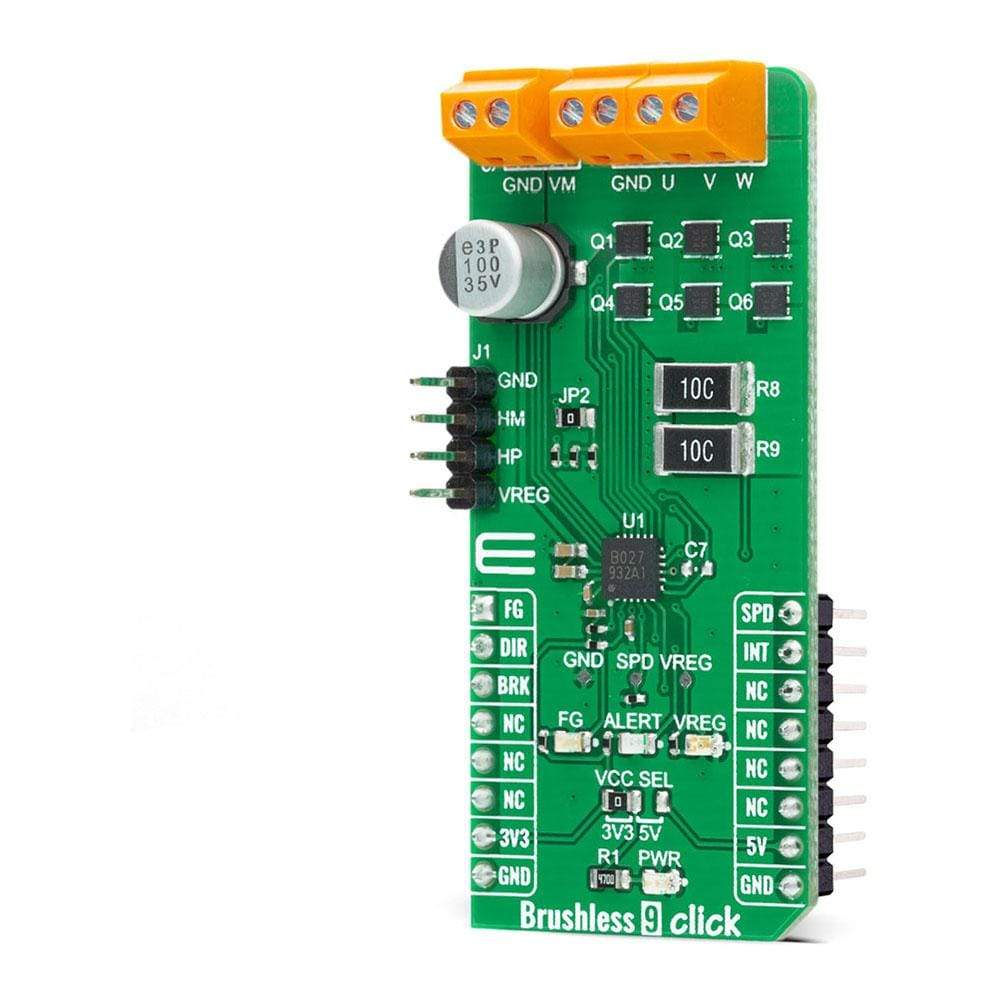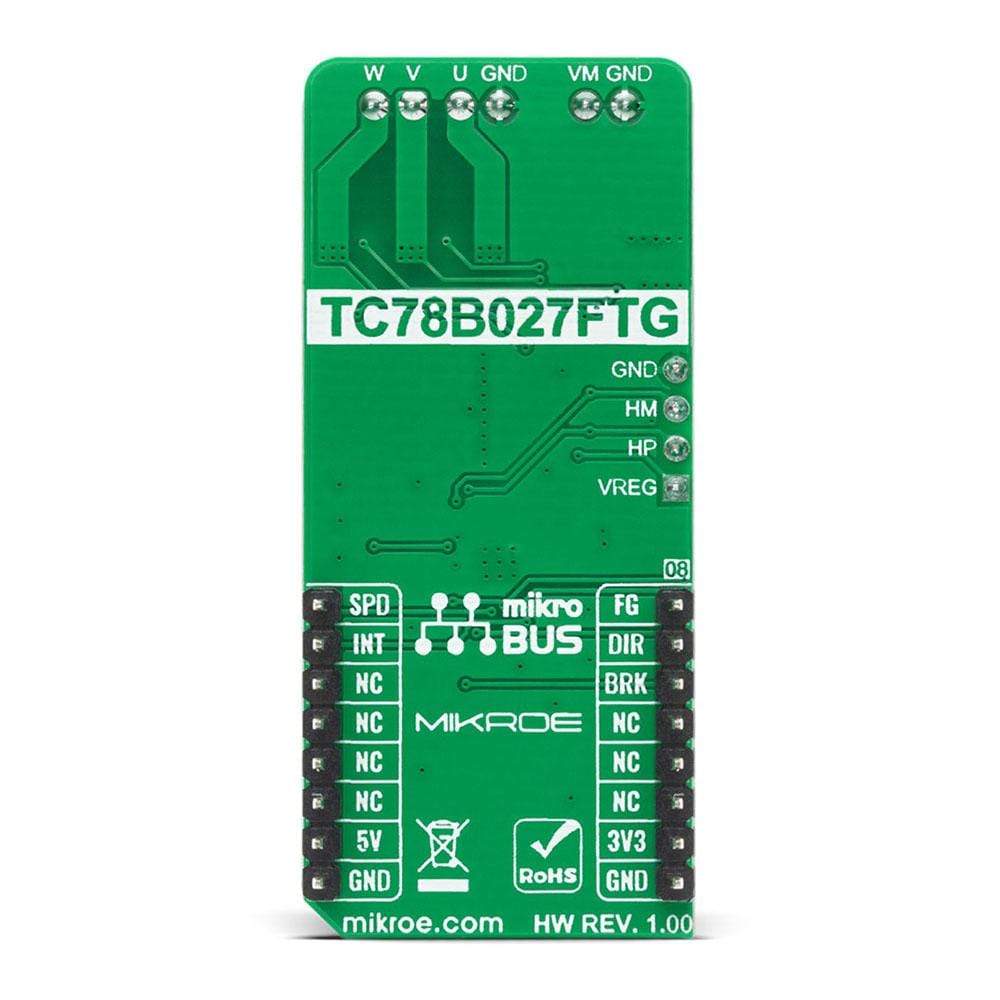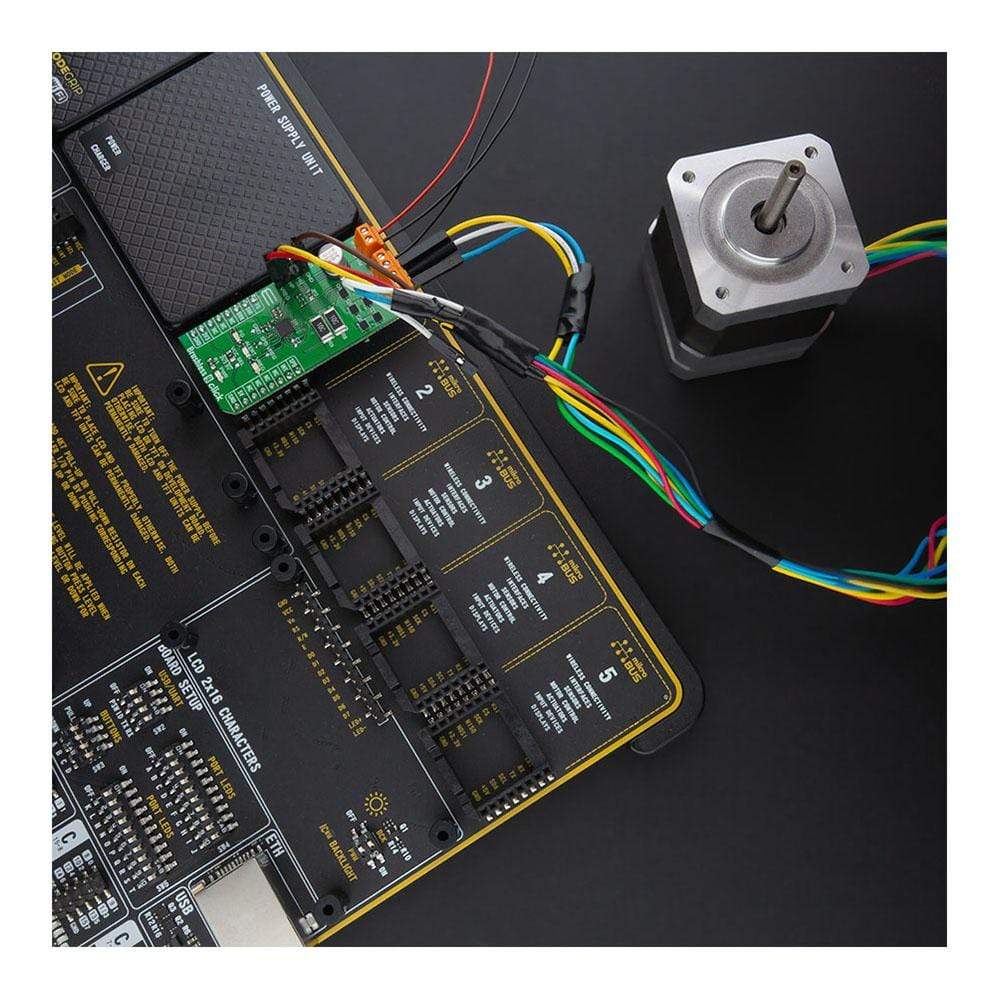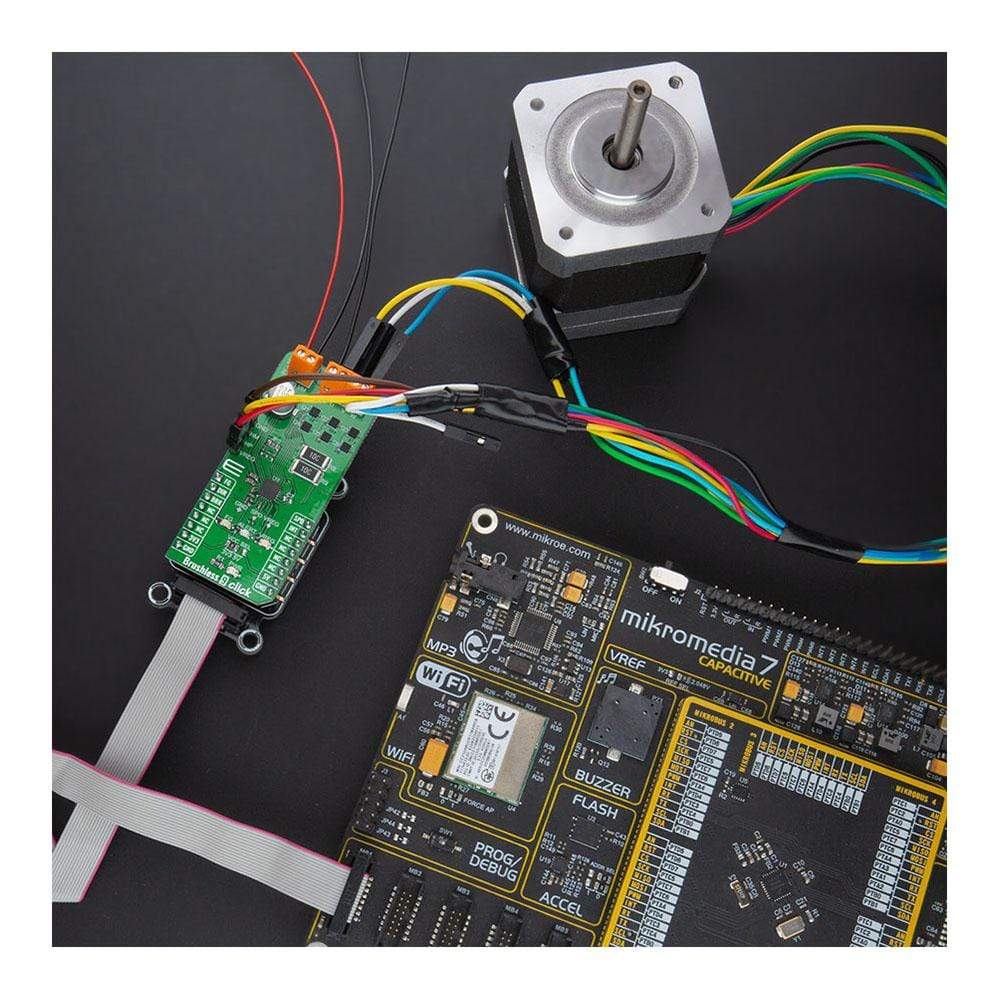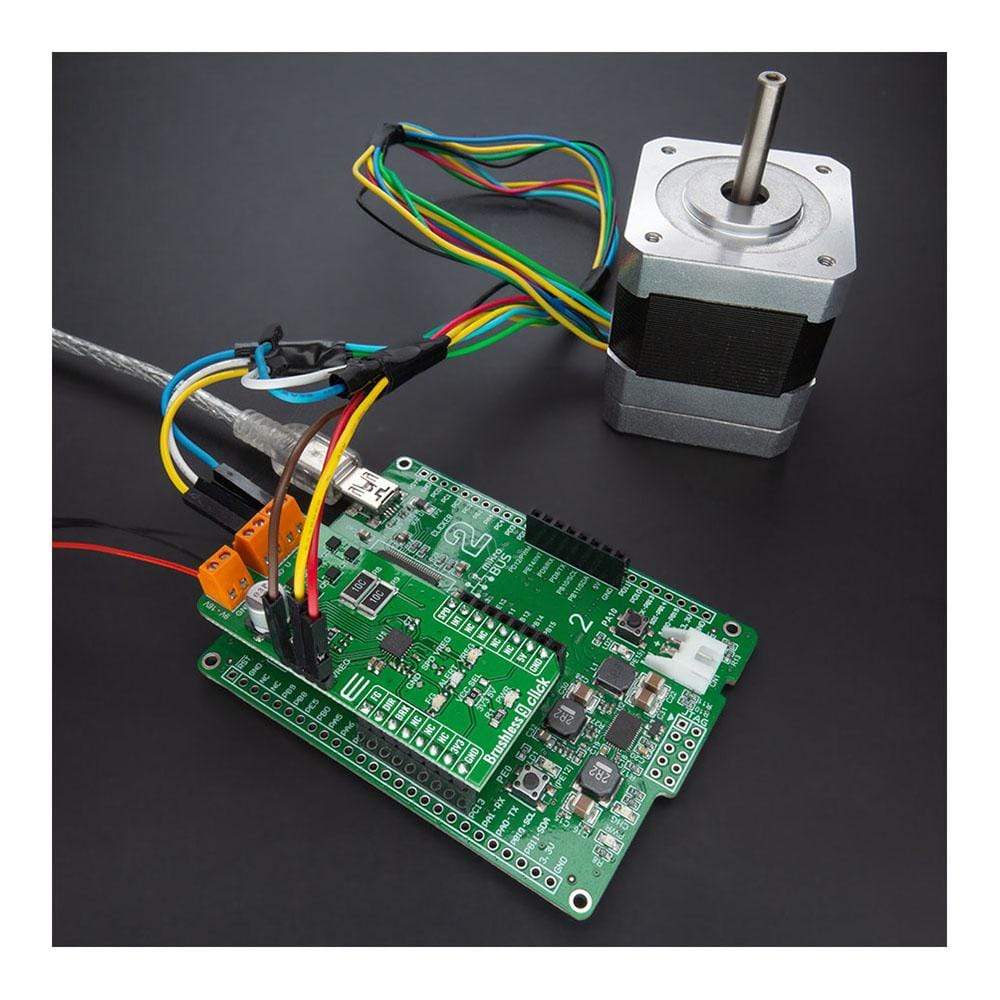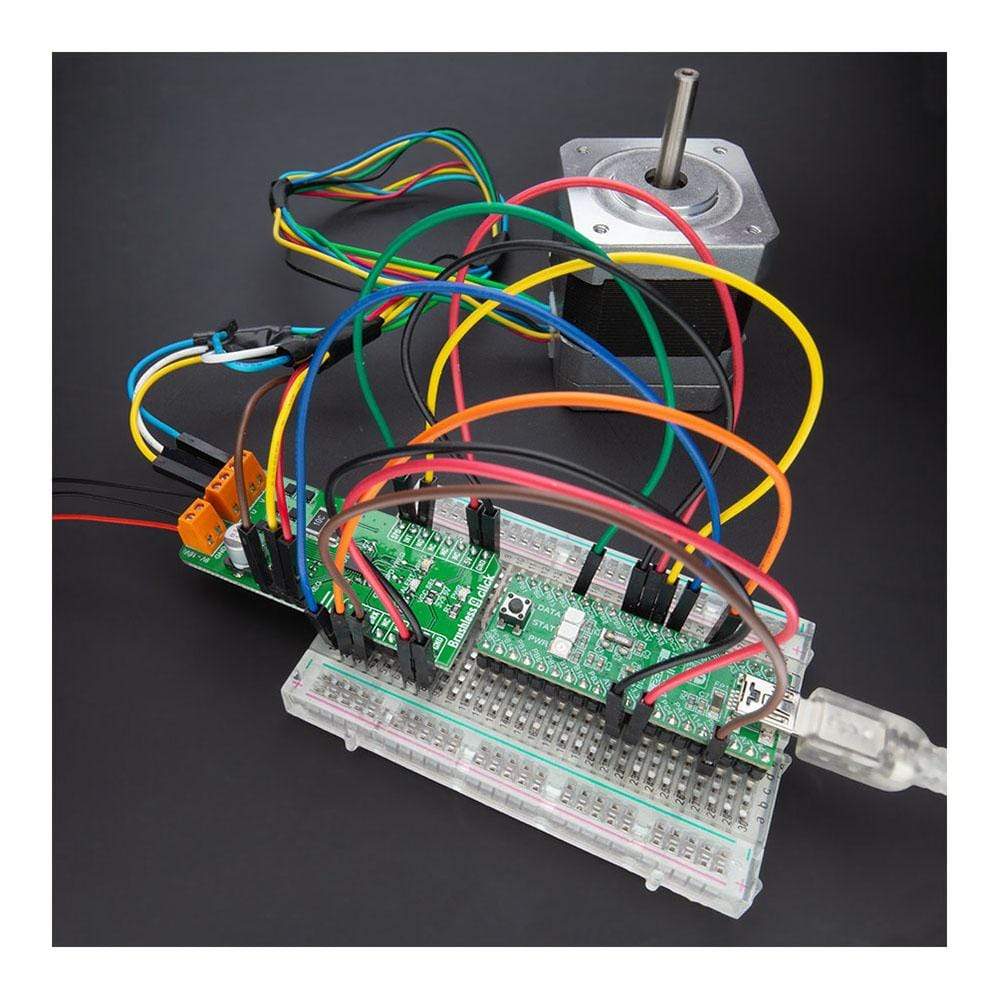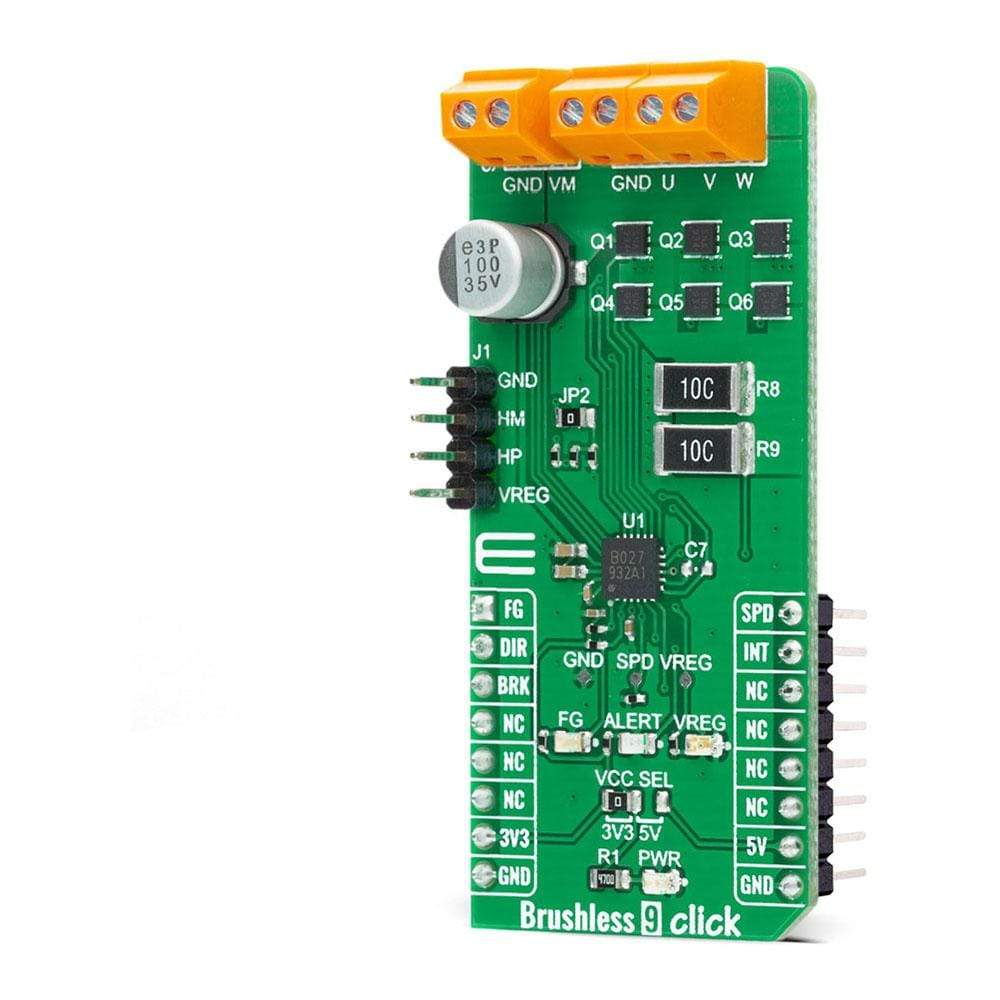
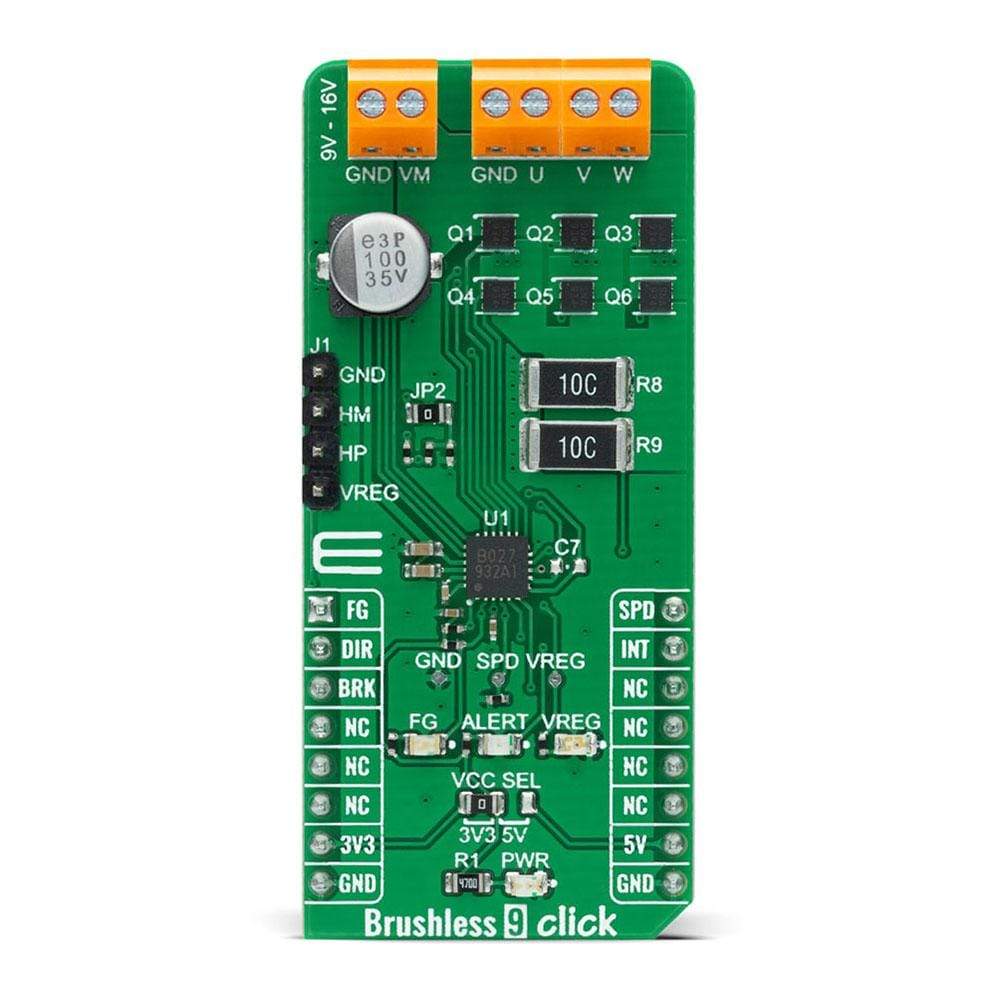
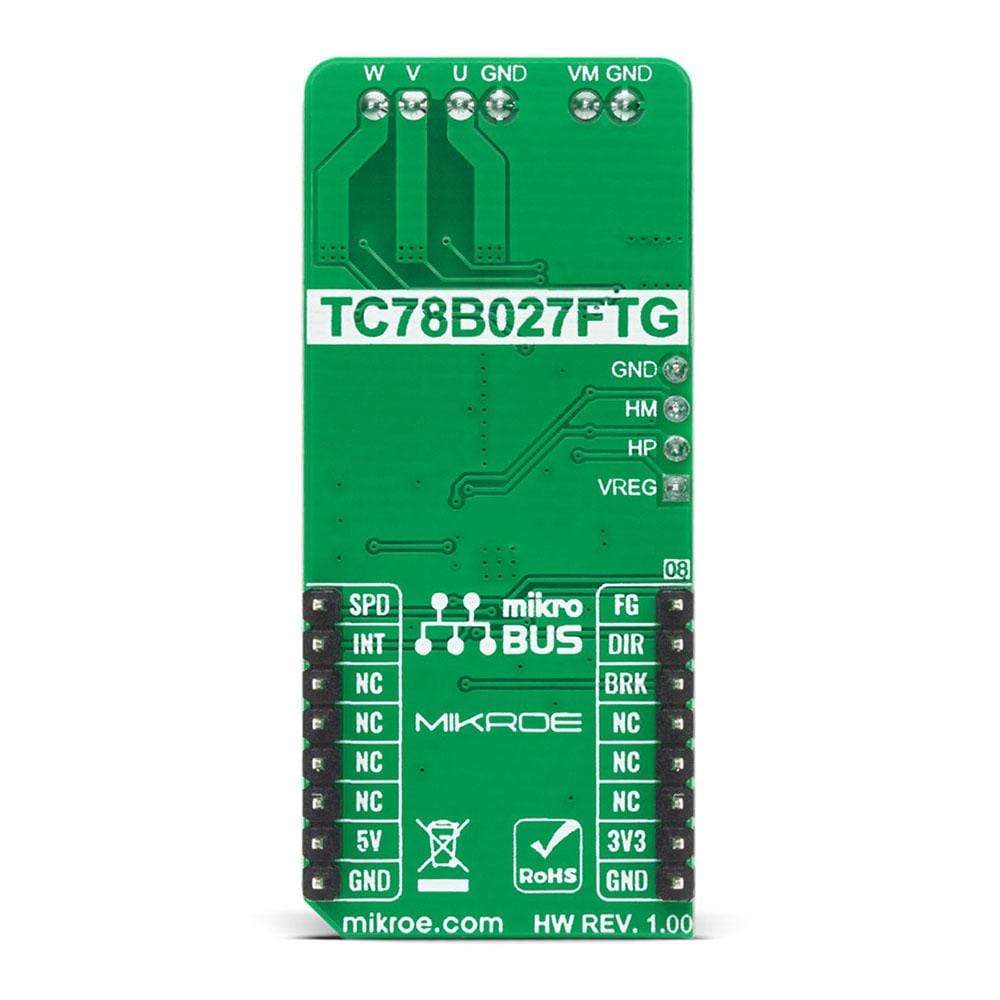
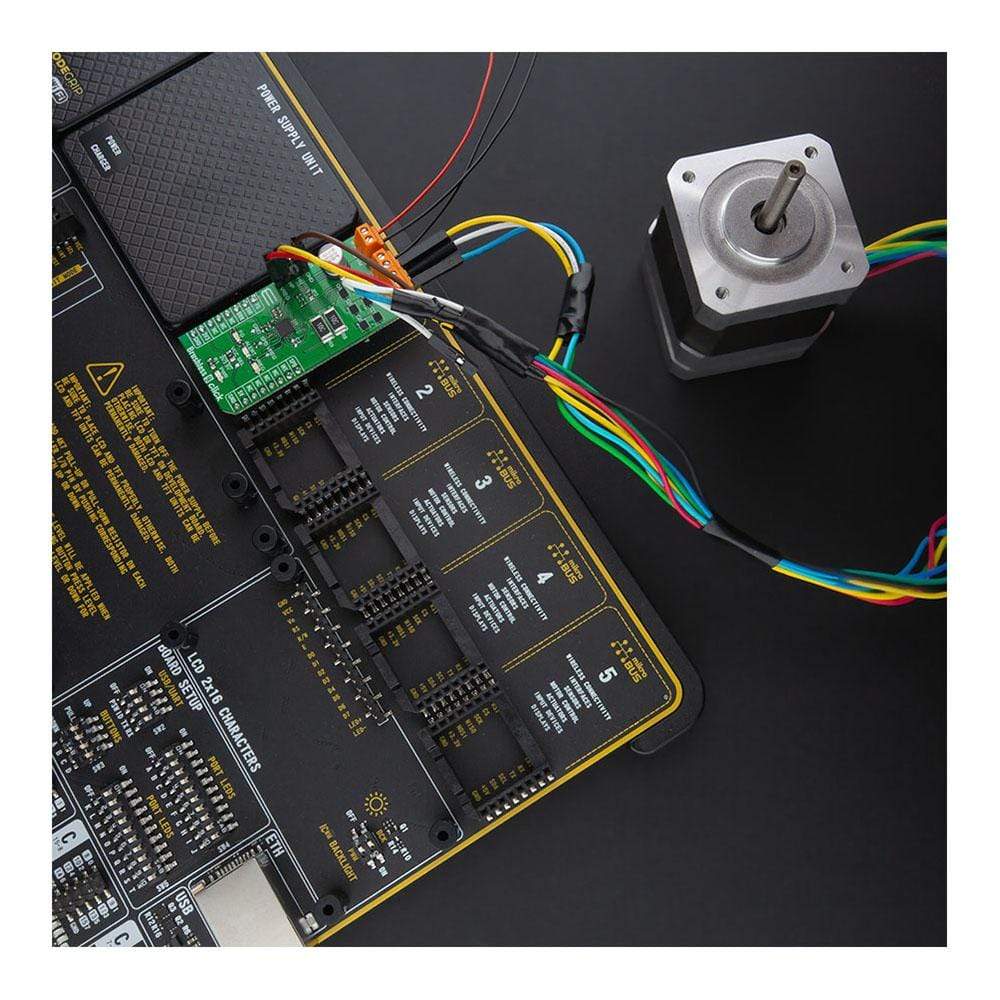
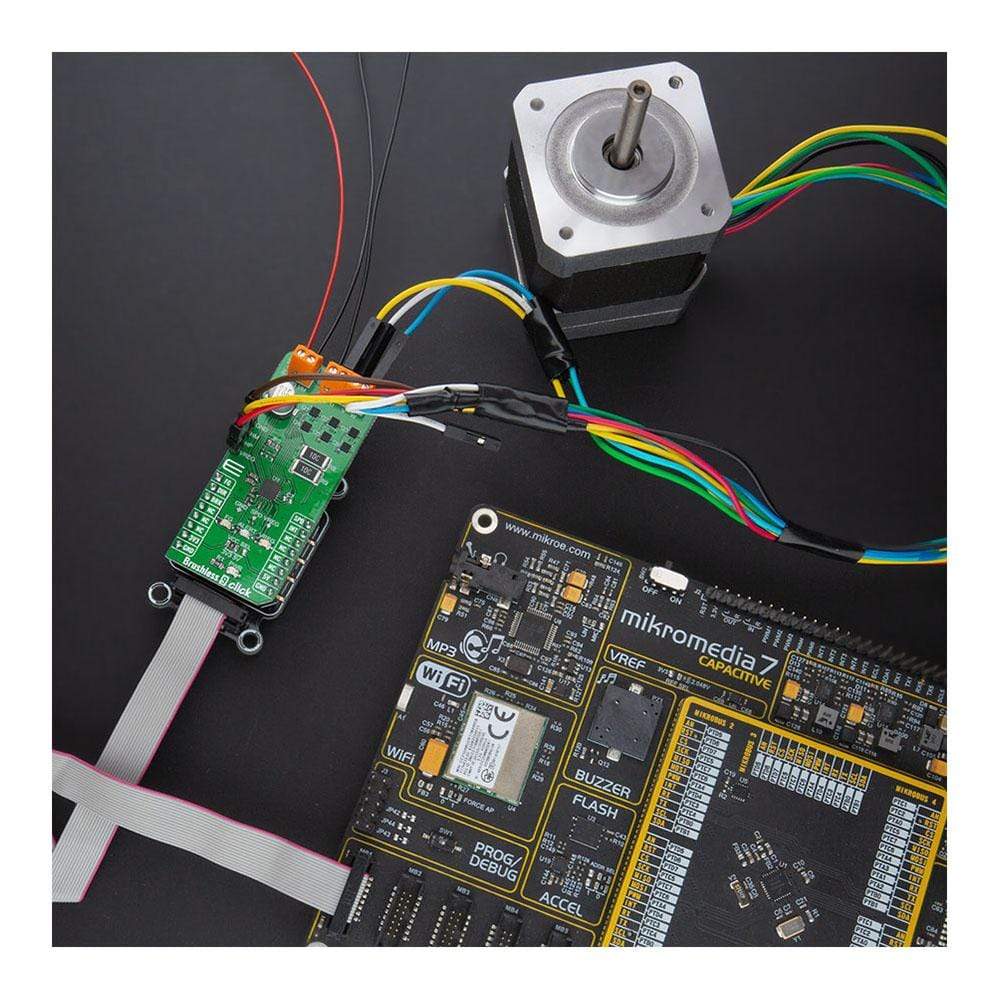
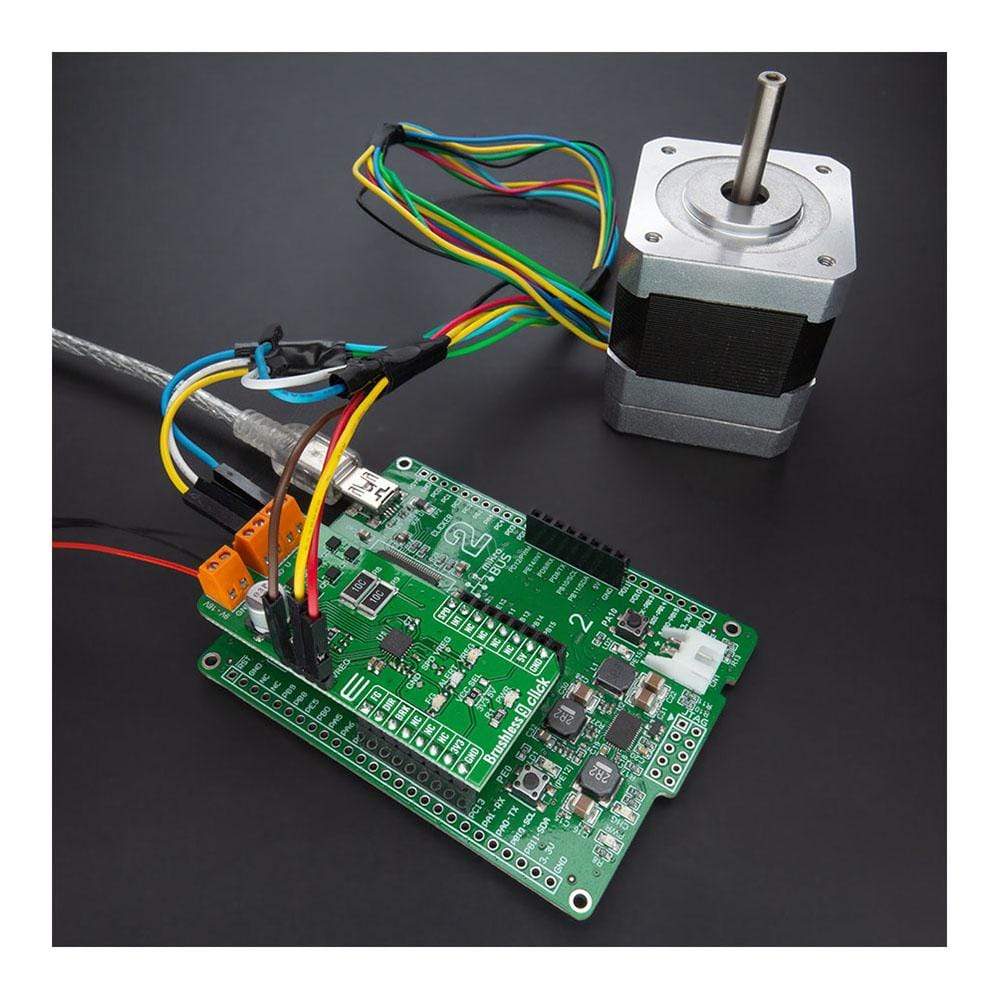
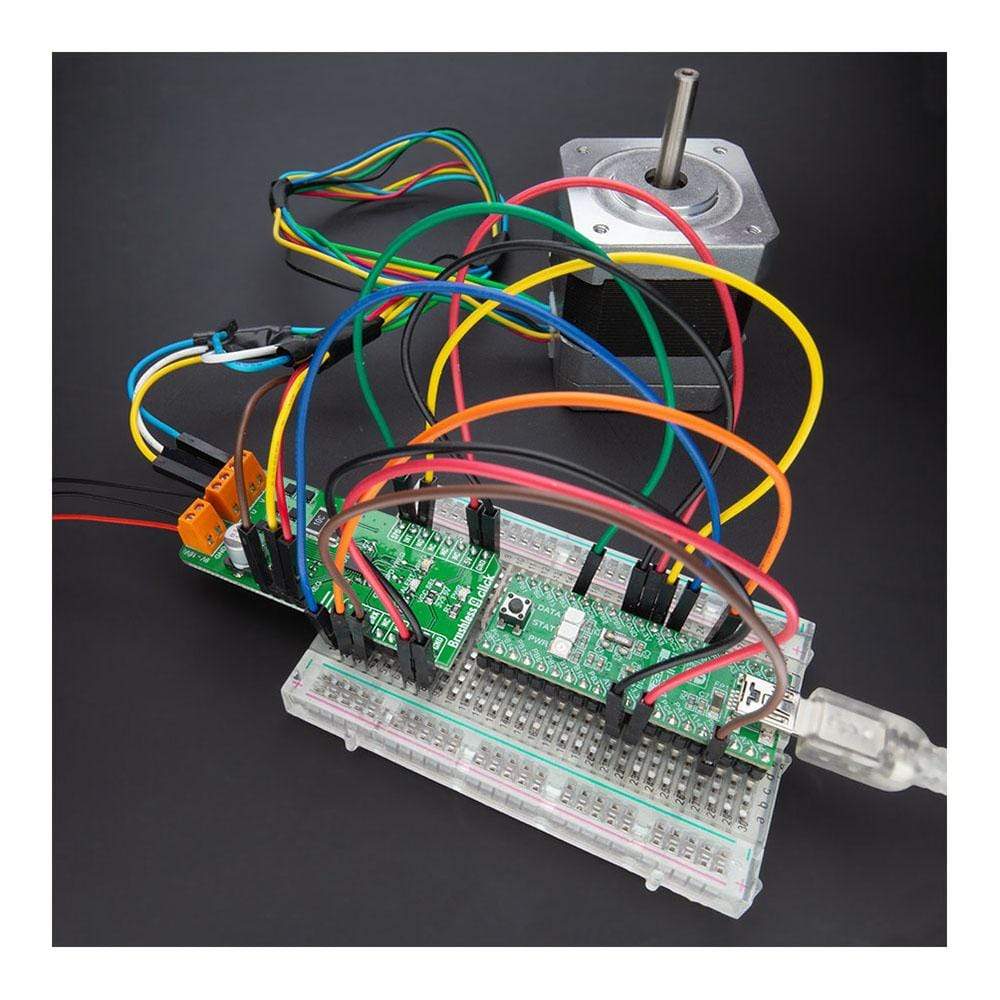
Overview
The Buck 9 Click Board™ is a high-efficiency step-down converter that provides a highly regulated output voltage derived from the connected power source, rated from 4V to 36V. The regulated output voltage can be selected between two values: 3.3V and 5V. These are voltage values that are most commonly used in many embedded designs. Buck 9 Click Board™ is based around an integrated DC-DC converter, labelled as MP9943. Due to its high efficiency, MP9943 allows the Click Board™ to easily deliver up to 3A of current. The MP9943 is very reliable, offering over-current and under-voltage protection, as well as a thermal shutdown
Downloads
Das Buck 9 Click Board™ ist ein hocheffizienter Abwärtswandler, der eine hoch geregelte Ausgangsspannung liefert, die von der angeschlossenen Stromquelle abgeleitet wird und von 4 V bis 36 V ausgelegt ist. Die geregelte Ausgangsspannung kann zwischen zwei Werten ausgewählt werden: 3,3 V und 5 V. Dies sind Spannungswerte, die in vielen eingebetteten Designs am häufigsten verwendet werden. Das Buck 9 Click Board™ basiert auf einem integrierten DC/DC-Wandler mit der Bezeichnung MP9943. Aufgrund seines hohen Wirkungsgrads ermöglicht MP9943 dem Click Board™, problemlos bis zu 3 A Strom zu liefern. Das MP9943 ist sehr zuverlässig und bietet Überstrom- und Unterspannungsschutz sowie eine thermische Abschaltung
| General Information | |
|---|---|
Part Number (SKU) |
MIKROE-3057
|
Manufacturer |
|
| Physical and Mechanical | |
Weight |
0.021 kg
|
| Other | |
Country of Origin |
|
HS Code Customs Tariff code
|
|
EAN |
8606018714469
|
Warranty |
|
Frequently Asked Questions
Have a Question?
Be the first to ask a question about this.

